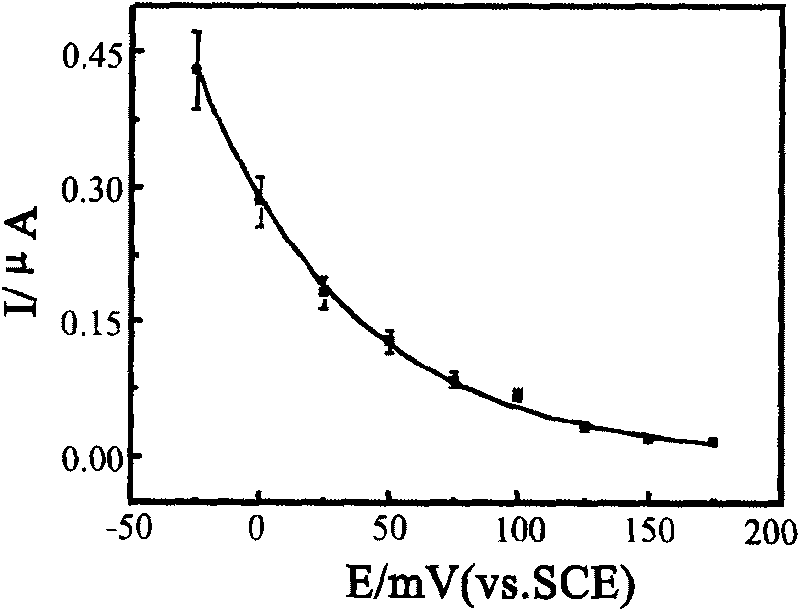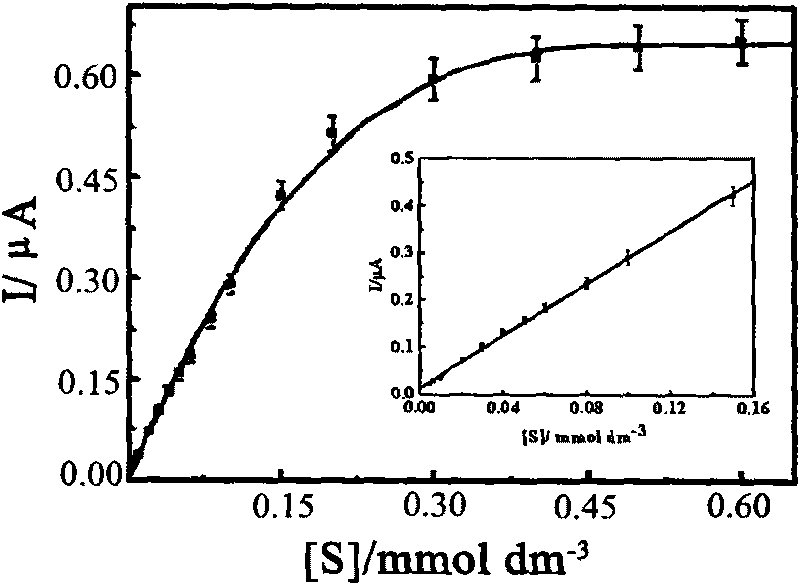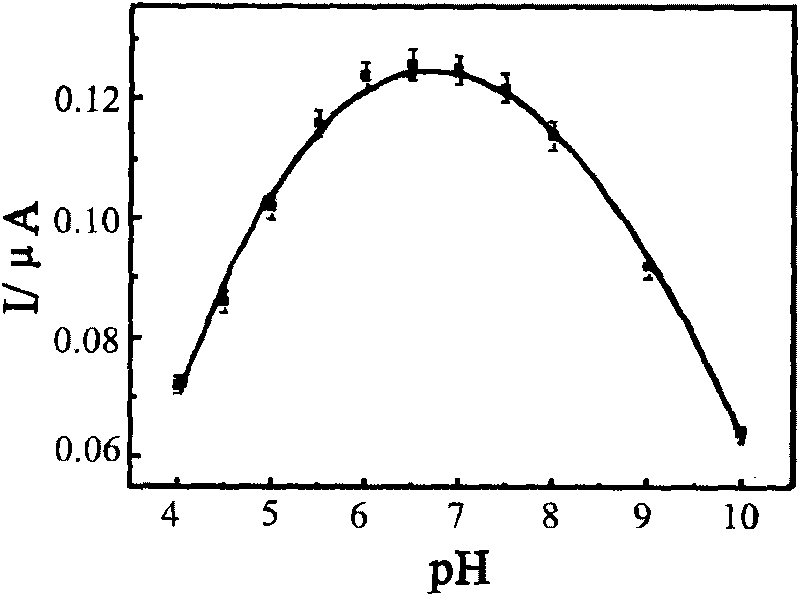Preparation method for polyaniline-polyphenol oxidase sensor
A polyphenol oxidase and polyaniline technology, applied in the field of biosensors, can solve the problems of low charge transfer efficiency, low load capacity, poor conductivity, etc., and achieve good biocompatibility, fast response, and good stability
- Summary
- Abstract
- Description
- Claims
- Application Information
AI Technical Summary
Problems solved by technology
Method used
Image
Examples
Embodiment Construction
[0017] 1. Preparation process:
[0018] 1. Raw materials:
[0019] Aniline (distilled under reduced pressure to colorless and stored in a refrigerator at 4°C for later use).
[0020] Polyphenol oxidase from mushrooms.
[0021] Ethyl sulfate-1-methyl-3-ethylimidazolium ionic liquid (according to literature J.D.Holbrey, W.M.Reichert, R.P.Swatlosk, G.A.Broker, W.R.Pitner, K.R.Seddon, R.D.Rogers, Green Chem., 4(2002) 407 method of preparation).
[0022] The remaining raw materials were of analytical grade.
[0023] All solutions were prepared with twice distilled water.
[0024] 2. Electrolyte composition:
[0025] Aniline: 0.1-0.5mol dm of the total electrolyte -3 .
[0026] Ethyl sulfate-1-methyl-3-ethylimidazolium ionic liquid: accounting for 5-50% of the total volume of the electrolyte.
[0027] Polyphenol oxidase: account for 0.1-1.0g dm of the total electrolyte -3 .
[0028] Hydrochloric acid: 0.1-3.0mol dm of the total electrolyte -3 .
[0029] Sodium dodecyl su...
PUM
 Login to View More
Login to View More Abstract
Description
Claims
Application Information
 Login to View More
Login to View More - R&D
- Intellectual Property
- Life Sciences
- Materials
- Tech Scout
- Unparalleled Data Quality
- Higher Quality Content
- 60% Fewer Hallucinations
Browse by: Latest US Patents, China's latest patents, Technical Efficacy Thesaurus, Application Domain, Technology Topic, Popular Technical Reports.
© 2025 PatSnap. All rights reserved.Legal|Privacy policy|Modern Slavery Act Transparency Statement|Sitemap|About US| Contact US: help@patsnap.com



